King of the Jungle
Giant Peacock Bass on Fly
Matt Harris in conversation with Rodrigo Salles of Untamed Angling
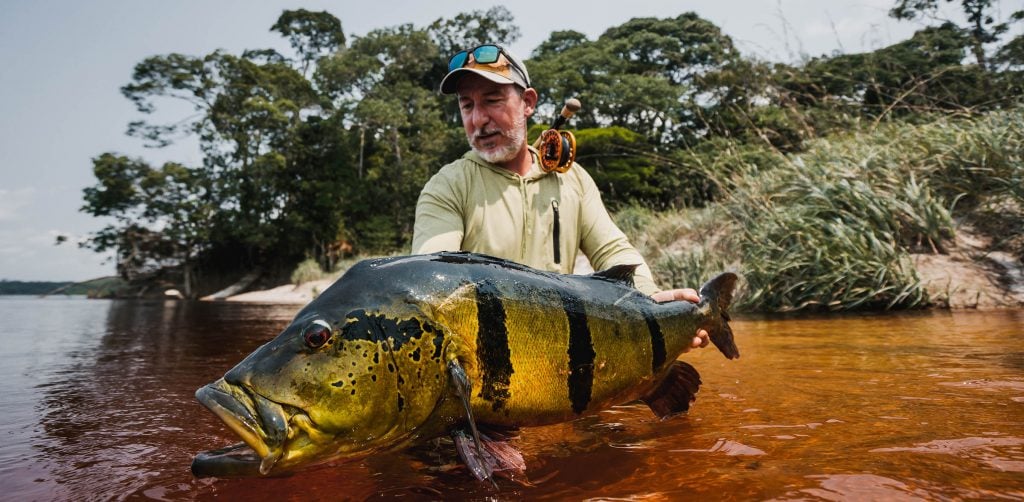
I send the big surface popper skimming low under the rainforest’s thick emerald canopy and watch the big topwater fly splash down into the inky shadows beneath the trees. Wiping the sweat from my brow, I tuck the steely ten weight rod under my arm and work the big popper back hand over hand, watching it gurgle and sputter provocatively across the dark, tannin-stained water.
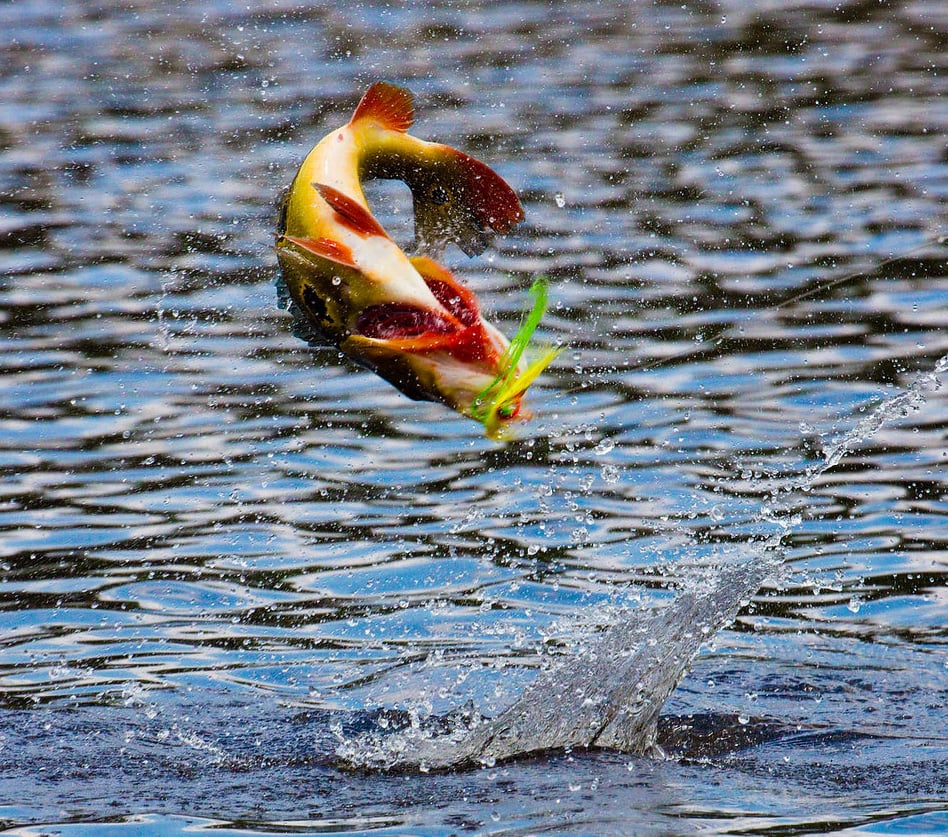 Suddenly, a vivid flash of olive, gold and scarlet and then a nerve-shredding implosion bursts through the glossy waters of the lagoon. I jab the rod back hard and the big tucunare clambers up into the blinding white light of the jungle. It cartwheels wildly before crashing back into the lagoon. I cling on grimly and do my best to keep this brutish creature from bulldozing its way to the sanctuary of the dead branches that snake out treacherously beneath the surface.
Suddenly, a vivid flash of olive, gold and scarlet and then a nerve-shredding implosion bursts through the glossy waters of the lagoon. I jab the rod back hard and the big tucunare clambers up into the blinding white light of the jungle. It cartwheels wildly before crashing back into the lagoon. I cling on grimly and do my best to keep this brutish creature from bulldozing its way to the sanctuary of the dead branches that snake out treacherously beneath the surface.
The fight is a nerve-shredding tour de force of barnstorming runs and primal violence, but slowly it deteriorates into a stubborn slugfest. The fish starts to yield to the powerful carbon blank, and finally, it is beaten. Gazing into the copper-colored waters, I find myself gazing at a truly magical sight. Twenty pounds and more of bristling fins, stripes and muscle wrapped up in that freakish Fauvist paintjob of red, green and gold. There, gleaming in the early morning sunshine is my prize.
For high-octane thrills and spills with a fly rod, very few fish can compare with Cichla temensis - the one and only speckled peacock bass.
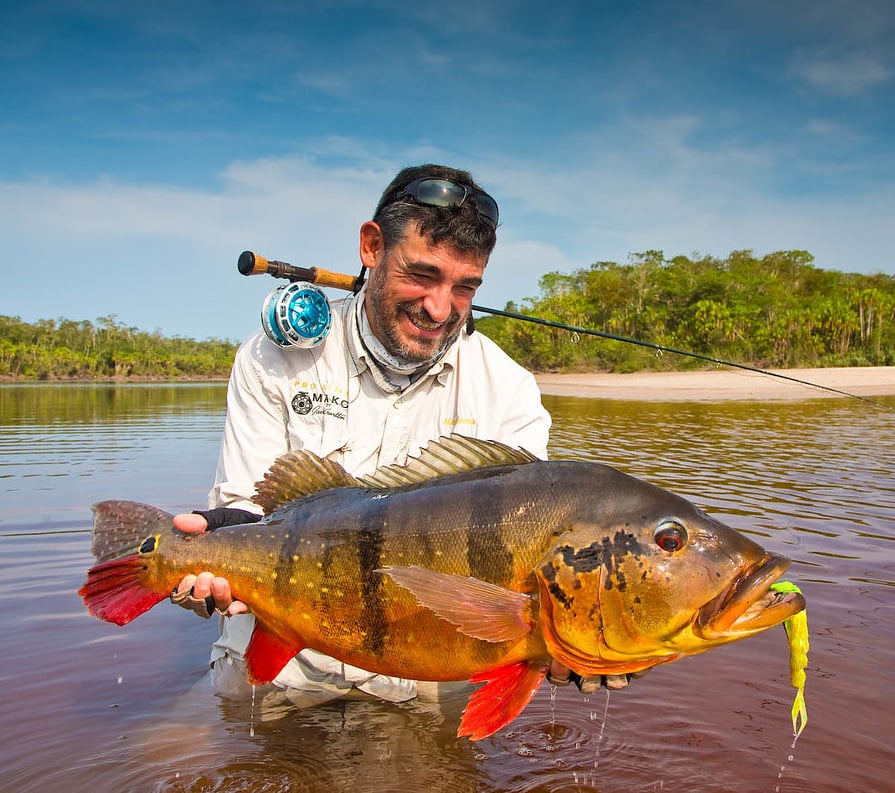
Anybody who has experienced fishing for peacocks knows the power and strength of this remarkable Amazonian species. Peacock bass are one of the most aggressive predators in the vast pantheon of species available to the travelling fly fisherman, and have earned a singular notoriety for their psychotically violent takes and bravura displays and occasional spectacular acrobatics once hooked.
More than 15 species of peacock bass (genus Cichla) have been documented in South America.
The largest and most powerful peacock species is the Cichla temensis-- reaching up to 30 pounds. The tucunare (Portuguese for peacock bass) is found throughout the black tannic waters of the Amazon region's Rio Negro Basin and is one of fly fishing’s most celebrated quarries.
To learn more about targeting these spectacular fish, I spoke to my great friend, IGFA record holder and peacock bass fly fishing pioneer, Rodrigo Salles.
Matt: “Rodrigo, tell me how fly fishing for peacock bass really got started.”
Rodrigo: “Well, the sport was really pioneered in the late 70s and early 80s when conventional gear anglers started to augment their gear with fly rods.
At that time, little knowledge existed about effective flies, lines, and techniques for catching peacock bass. However, with experimentation, fly fishers learned that aggressive saltwater-style tactics using outsized streamers and poppers really did work for targeting trophy peacocks. Indeed, in some cases, the stealthier nature of fly fishing could actually outfish the noisier and in some ways cruder techniques employed by conventional fishermen. We realized that large woodchopper lures armed with multiple propellers cast on heavy conventional rods were not the only way to go."
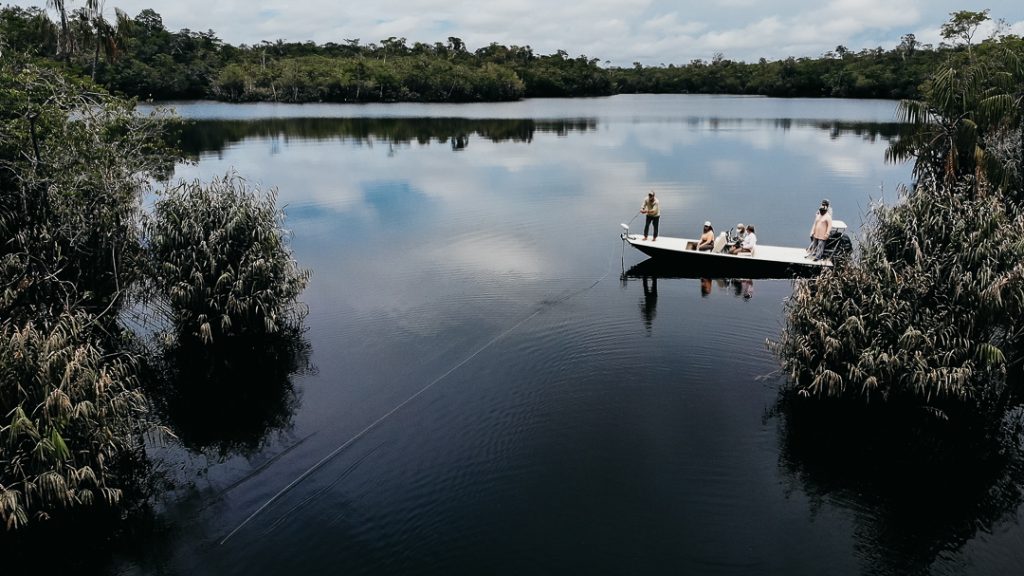
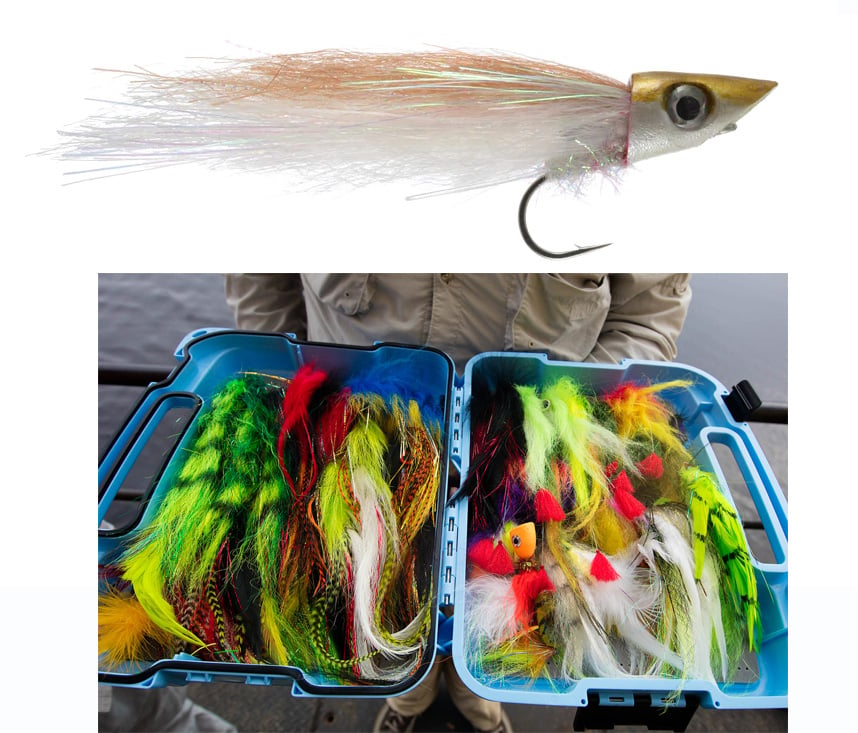 "While woodchopper style lures remain popular and successful for catching giant Amazon peacocks, my fellow fly fishermen and I elected to fish those rivers with fly rod only.
"While woodchopper style lures remain popular and successful for catching giant Amazon peacocks, my fellow fly fishermen and I elected to fish those rivers with fly rod only.
Fly fishing using single barbless hooks did far less damage to the fish than traditional lures armed with multiple barbed treble hooks, and using powerful modern fly rods and fast-evolving saltwater tactics, even the biggest fish could be landed effectively on fly."
Matt: “Tell me about tactics.”
Rodrigo: “Well, I learned that noise is an important component of getting the fish’s attention, particularly when they are skulking deep in the undercuts and hard-to-access spots.
I deployed big, noisy topwater popper flies which worked extremely well even in rising waters. These so-called poor conditions became a window of opportunity. Throwing topwater flies offered all the exhilaration of topwater lure fishing but allowed a stealthier way to put the artificial in front of the fish."
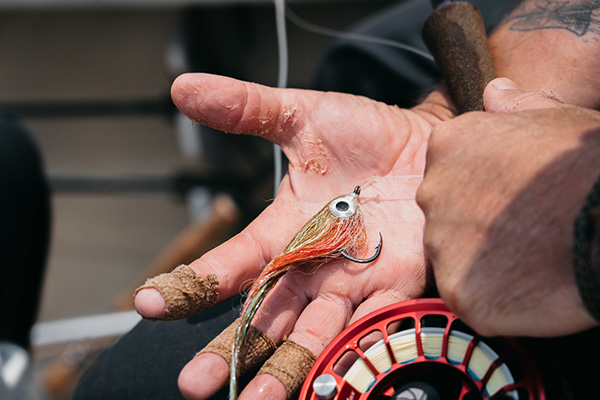
Matt: “Peacock fishing is traditionally tough in rising water, right?”
Rodrigo: “Well, yes, it’s true that peacock bass tend to be lethargic in rising water, but in the end, they need to eat. I discovered that sometimes smaller flies and slower stripping could often be the right strategy. My fellow fly fishers and I started catching world record sized fish - 20-plus pounders - on relatively small, subtle flies at the same time that conventional anglers were struggling to get bites."
Matt: “Tell me more about the various spectacular incarnations of the peacock - the tucunare, the paca and so on.”
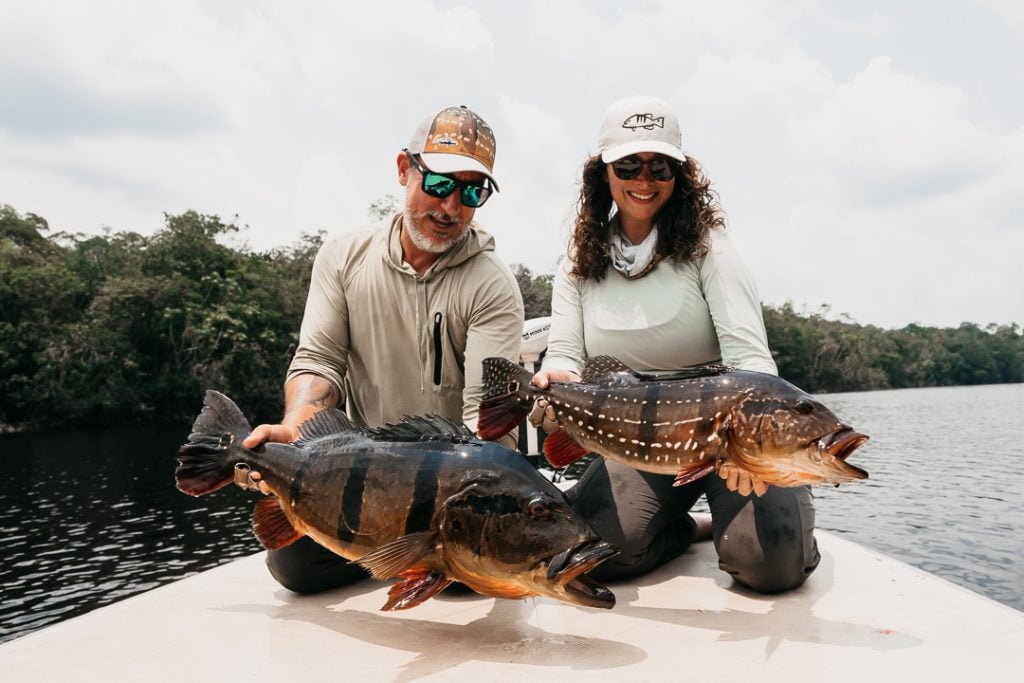
Rodrigo: “Well, part of the fascination surrounding the temensis species of peacock are their spawning and feeding habits. For example, the same fish displays two different color phases: when it is spawning, it displays three vertical black bars, but when it's not spawning, it shows speckles. While peacocks can reproduce year-round, their peak spawning occurs at the end of the dry season and the onset of the rainy season. They do not migrate to spawn; rather they dig nests at the bottom of riverbanks, depositing eggs on tree trunks or rocks. Then they guard their young for weeks on end, defending against all predators. Adult peacocks prey on other fish, including each other. But as juveniles, they eat shrimp, insects, and other arthropods. Their feeding activity is heightened on warm, sunny days between 9 am and 3 pm.”
Matt: “So, Rodrigo, if I want to catch a real monster, where should I go?”
Rodrigo: "Well, of course I am a little biased here, but our Untamed Angling fishery on the Rio Marié has produced significantly more 20-plus pound plus peacocks on fly than any other destination."
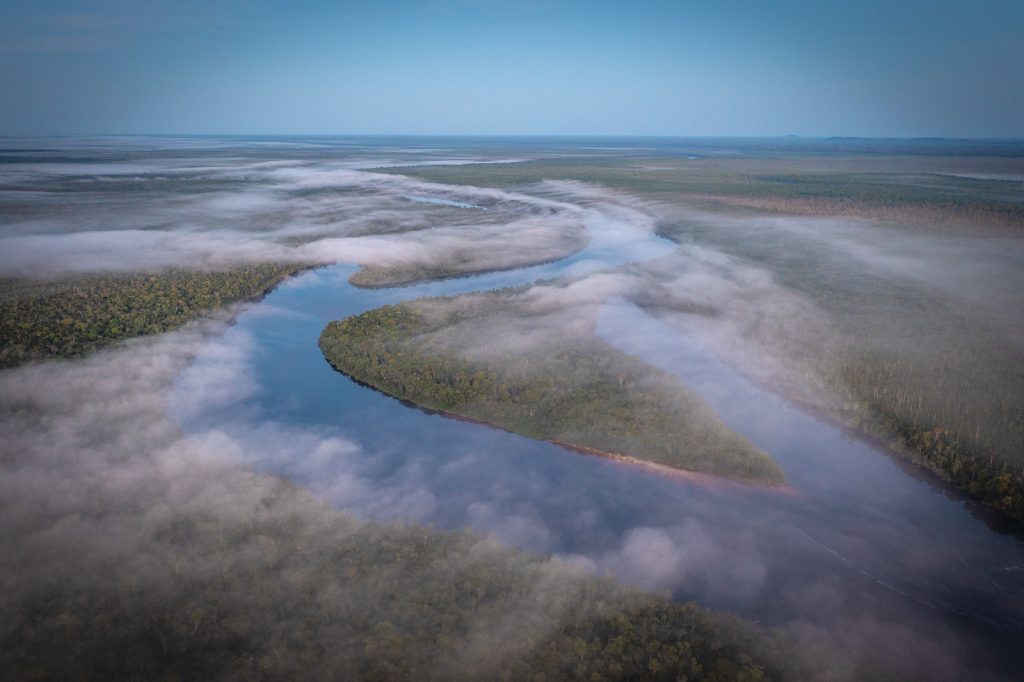
Matt: "Why do you think Marié produces so many really big fish?”
Rodrigo: “The Rio Marié is one of those rivers perfectly suited to house giant peacock bass, protected from the mouth to the headwaters and lying entirely inside indigenous land - 800 miles of untouched jungle. Its main channel is deep, allowing baitfish to run upstream comfortably, as opposed to the other Rio Negro tributaries that get too shallow in the dry season. The natural features that bring lots of 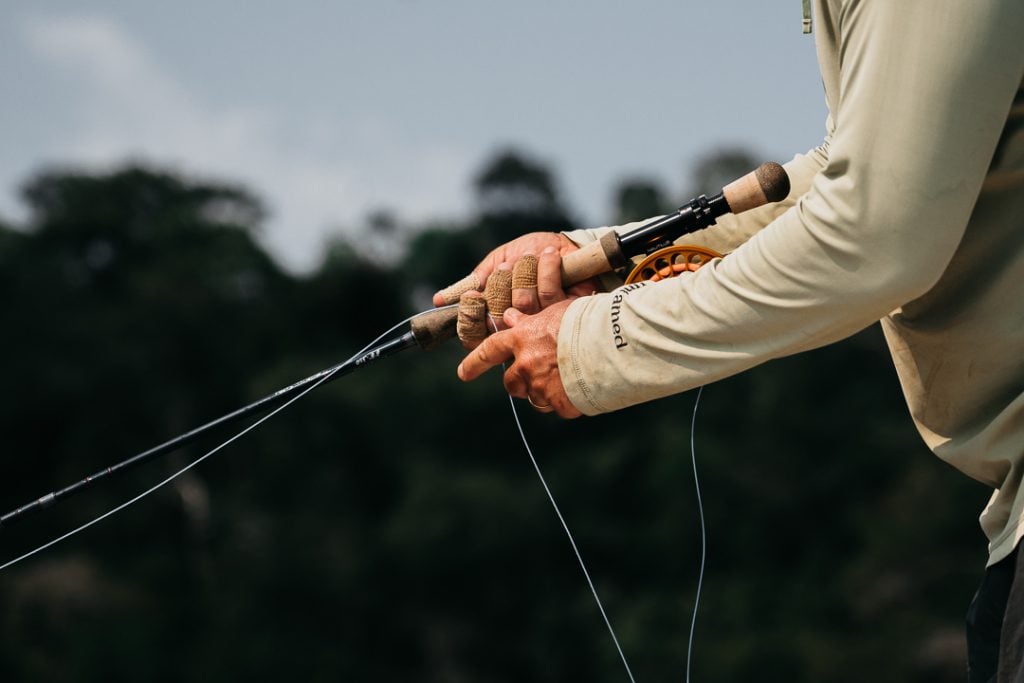 food to peacock bass combined with protected waters have created a unique fishery unlike any other in the Amazon. Not surprisingly, this ecosystem produces some of the best, and biggest world record peacock bass numbers in the world.”
food to peacock bass combined with protected waters have created a unique fishery unlike any other in the Amazon. Not surprisingly, this ecosystem produces some of the best, and biggest world record peacock bass numbers in the world.”
Matt: “How should I tackle up for the big fish of the Marié?”
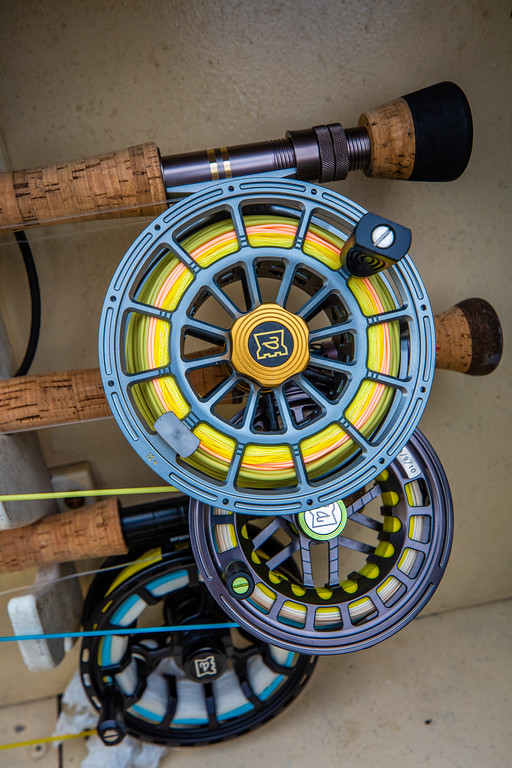 Rodrigo: “Well, over years of peacock bass fishing, I’ve learned that you should be prepared for all situations. For me, that means having three rods rigged and ready: one 9wt with a floating line with a clear tip intermediate (my rod for 70 percent of fishing); one 9wt with a floating line and a big popper to make noise and attract the big ones; and a 10wt with a 300-400-grain sinking tip for deeper pools and mouths of lagoons. All of your gear should be pre-tested for strength. A giant peacock can wreak havoc on even the heaviest of tackle, and any weak spots will be mercilessly exploited.”
Rodrigo: “Well, over years of peacock bass fishing, I’ve learned that you should be prepared for all situations. For me, that means having three rods rigged and ready: one 9wt with a floating line with a clear tip intermediate (my rod for 70 percent of fishing); one 9wt with a floating line and a big popper to make noise and attract the big ones; and a 10wt with a 300-400-grain sinking tip for deeper pools and mouths of lagoons. All of your gear should be pre-tested for strength. A giant peacock can wreak havoc on even the heaviest of tackle, and any weak spots will be mercilessly exploited.”
Matt: “Why are big peacocks so notoriously difficult to land?”
Rodrigo: “As ambush predators, they lurk close to structures like fallen trees and vegetation. When hooked, the fish’s impulse is to run right back into the structure from where they came. A mistake with knots or gear can cost an angler the fish of a lifetime or even a world record. Even if your gear is absolutely bulletproof it can still happen.
Matt: “What gear would you recommend?”
Rod: “For rods: 9-10 wt rods with powerful butt sections to really hold the fish. These fish are not distance runners, so you don’t need lots of backing. The most important aspect of a reel is a good drag system to stop them when necessary."
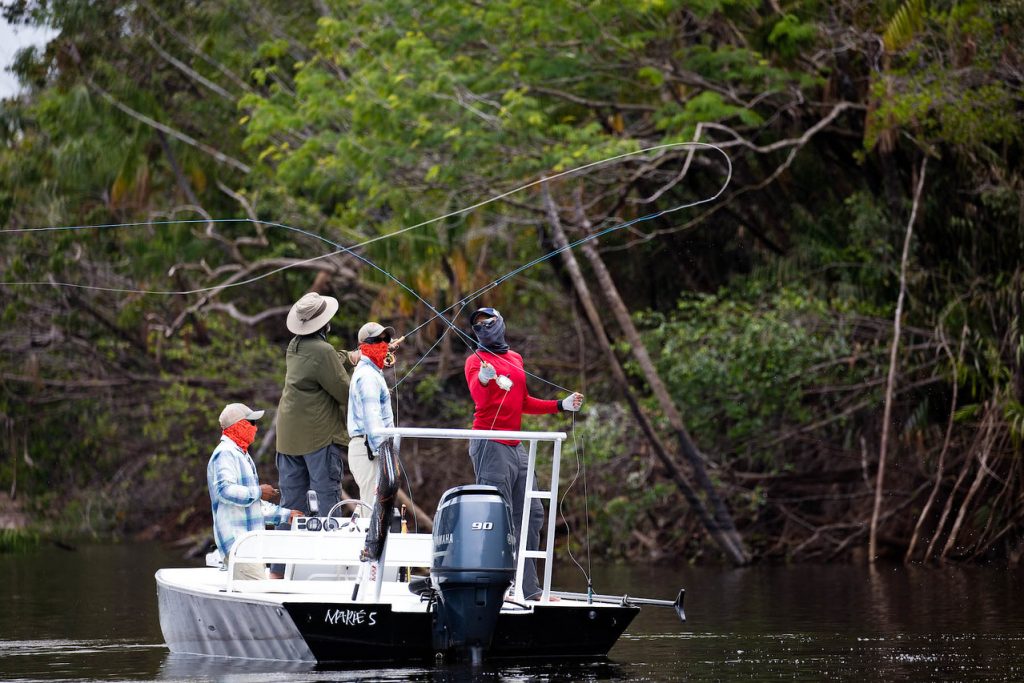
"For lines: use only specialty tropical core fly lines made for hot, humid jungle environments. These fly lines typically have a short head aggressively tapered and specifically designed to turn over big flies and poppers with very few false casts. You don’t need to cast 70-80 feet to be successful fly fishing for peacock bass. The most important thing is to keep casting all day long with big flies and making as few false casts as possible will maximize your fly in the water time and conserve your energy.”
Matt: “What about flies?”
Rodrigo: “The best streamer flies are typically tied with synthetic fibers because they shed water and are thus much easier to cast than patterns constructed from more absorbent natural materials. That said, the Tarpon Mullet pattern tied by our mutual friend Tomek Bogdanowicz at Pike Terror Flies using natural Nyat hair has been deadly."
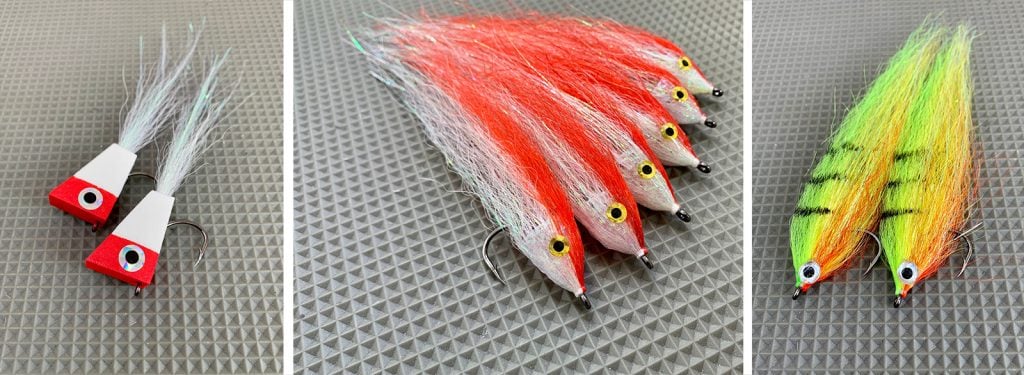
"Whatever pattern you use, make sure your fly is tied on the best saltwater hooks available--Varivas, Tiemco, Ahrex, or Gamakatsu. For topwater flies, big poppers, divers and Pole Dancers are the best. I know that you love to use your big 5/0 Poledancer pattern, but although I concede it can be devastatingly effective, my favorite is James Christmas’s brilliant NYAP pattern. This pattern is much easier to cast all day long while still making a lot of commotion."
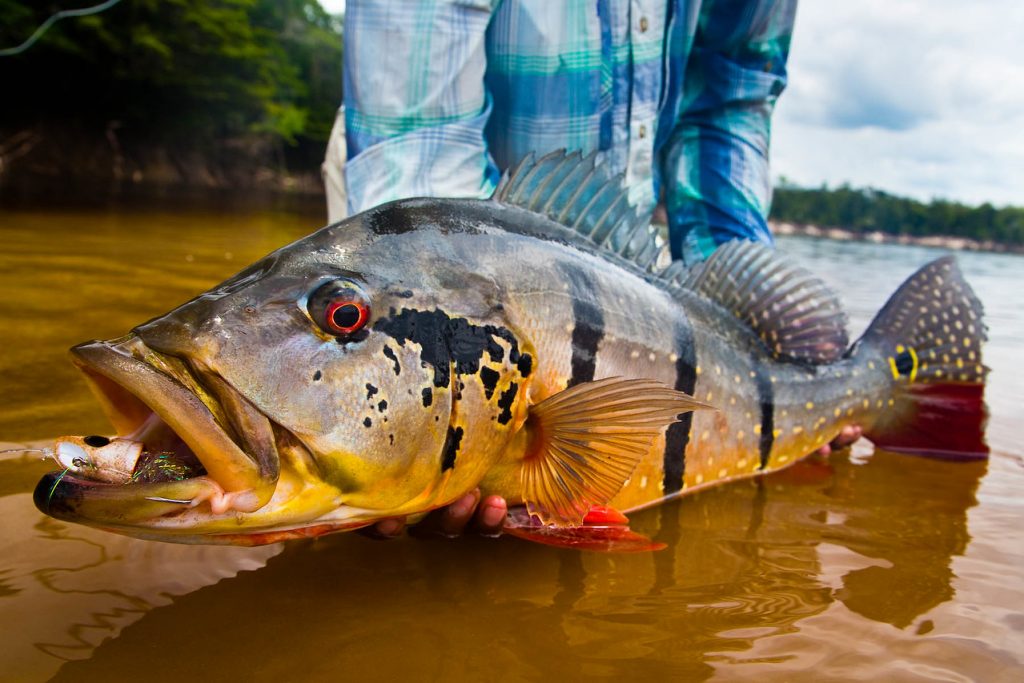
Matt: “Is the fishing easy?”
Rodrigo: “Hahaha! Sometimes. But more often catching giant peacocks in the jungle requires as much persistence and skill as fishing the flats for tarpon or swinging for trophy steelhead. Peacocks are the boss of the jungle. I have witnessed them refuse a fly for swimming awkwardly and punch a fly away from the nest with the kick of their tail.
Matt: “How does peacock fishing vary throughout the season?”
Rodrigo: "In the early season, peacocks are hungry and have not gotten their fill. They need to pack on the calories after spending most of the high-water months struggling to find food in the labyrinth of the flooded jungle. When rivers get back to their regular levels and water flushes out of the jungle, all of the fish species come back to the rivers and its game on. Peacocks will readily eat and kill anything that crosses their path, so the adage that big flies catch big fish is definitely true here. If the water levels are not optimal, then using an intermediate or sink tip line is recommended. If the fly swims by a big fish, it’s likely that it will take a bite."
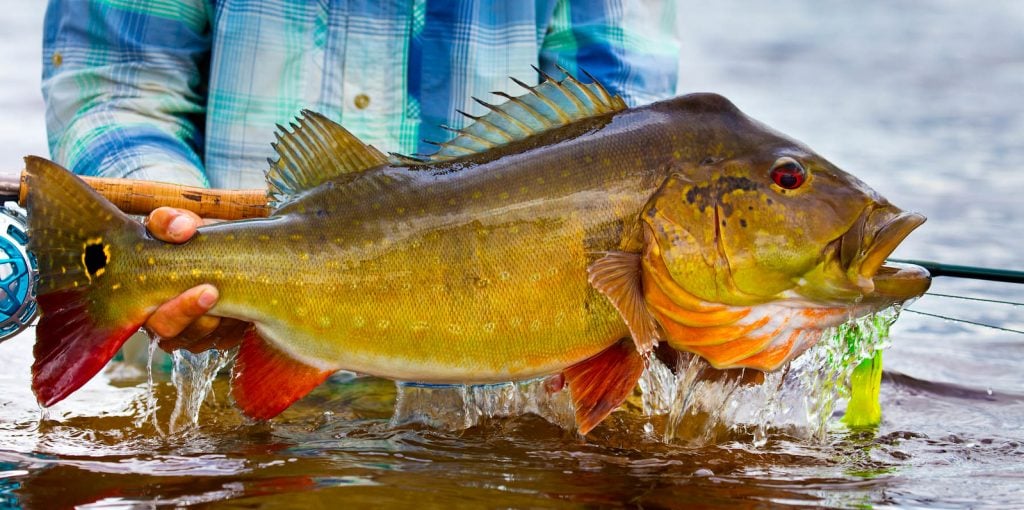
"By mid-season, many peacock bass are looking for a place to spawn in the lagoons and lakes. Water levels are low in general, but in the Amazon jungle, nothing is the same as the day before--especially water levels. This is the point in our season when sight fishing is at its best. Sandbars in the main river are frequented by big fish in the early mornings and late afternoons, and the main lagoons and lakes are packed with big fish preparing to spawn. In these situations, the fish are aggressively protecting their spawning territories. Medium-sized streamers are the best choice for sight fishing; topwater flies are unbeatable in the structure."
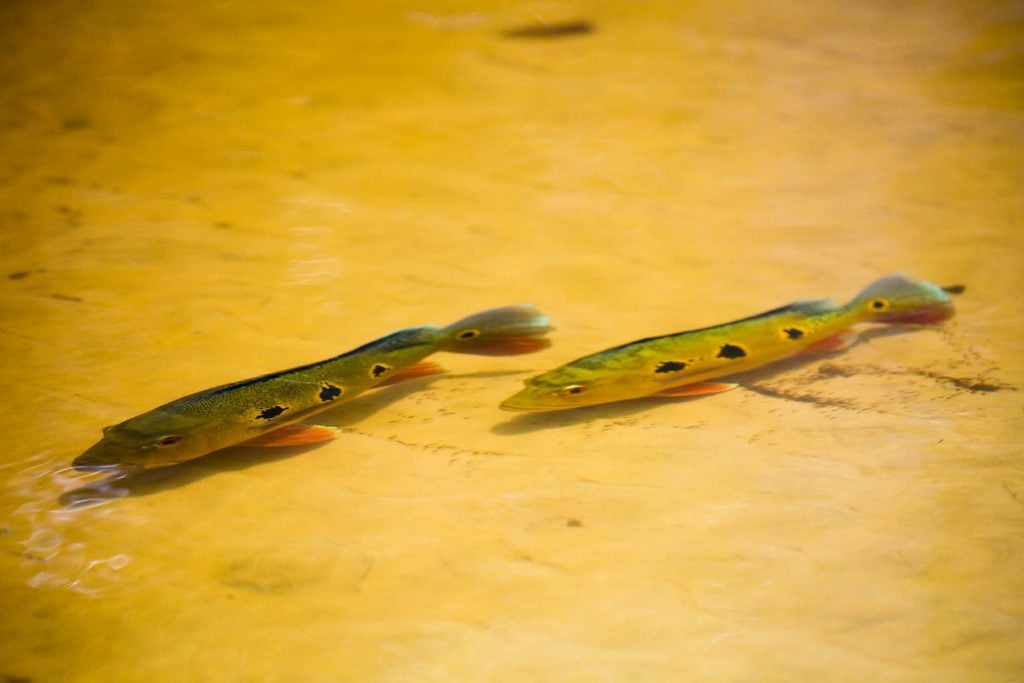
"In the late season, most of the fish have already spawned and they are hungry again. They can spend several weeks digging the nest and protecting the fry. So, when they “release” the juveniles into the wild, they are starving again. Topwater flies are excellent to move big ones! Tip: If the water is higher than expected, try smaller flies and a slower strip."
Matt: “Tell me about fighting the fish”
Rodrigo: “Fighting a 20-pound plus peacock is like trying to stop a freight train rolling downhill. Like a saltwater game fish, they will head straight for the structure to cut you off. So don’t bring your trout set to the jungle! Make sure you set yourself up for a mighty strip set, and after you’ve got a proper hook in the fish, the first round of your fight is in the bag."

The stage after hooking the giant is critical. The monster is determined to break you off in sunken structure. No matter what you do, there will always be a fish that gets away from you. If you are lucky enough to fish for these creatures, you will start to enjoy the learning process that comes with defeat. Try not to be disappointed; enjoy the process, watch out for hidden structure, and be aggressive. Trust your fishing guide - especially when bringing the fish to hand. The main idea is to get the fish nice and calm as it gets close to the boat. As we all know, fish often save their last bit of stamina for when they see the boat - bursting away just when you get close.
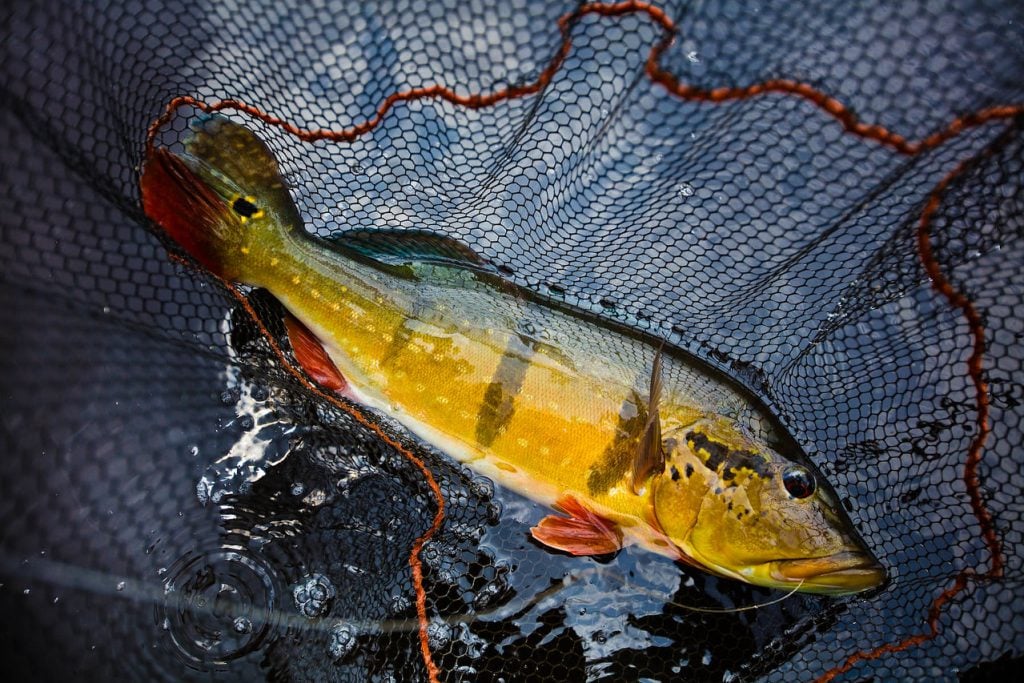
"The most pivotal moments in the fight are the first and the final punch. Fight that fish all the way into the net, for that is when the hook can pop out easily. Respect the fish when you release it at the end of a fight by keeping it submerged. And don't lip the fish without supporting its body weight."
"Fly fishing for a giant peacock is certainly one of the most exciting, most intense and most rewarding experiences in fly fishing. Whatever the outcome, win or lose, it will make you a better angler.”
Matt: “I’d agree with every word of that. My 23-pound fish from the Ipassa Lagoon is one of the great memories of my fly fishing life, but I’ve been humbled by a few other giants from the Marié. Thanks so much for sharing your thoughts, Rod, and I look forward to tussling with a few of the Marié’s giants with you in the not-too-distant future.”
Rodrigo: “It’s been a pleasure - thank you for allowing me to share my passion for these special fish.”
_________________________________
It is hard to argue against the fact that the Rio Marié is the finest trophy peacock bass fishery on planet Earth. More fish over 20 pounds come out of the Marié than the next top 5 peacock fisheries combined, including multiple world records, and what was the largest peacock bass ever caught on a fly rod at the time, a massive 28.5 lbs., 89 cm. long giant landed by Florian Kaiser in 2017! Rodrigo Salles topped it for another fly rod world record length peacock of 91 cm. in Fall 2021 and 92 cm. in Fall 2022! To learn more about Rio Marié please visit marieriver.com.
